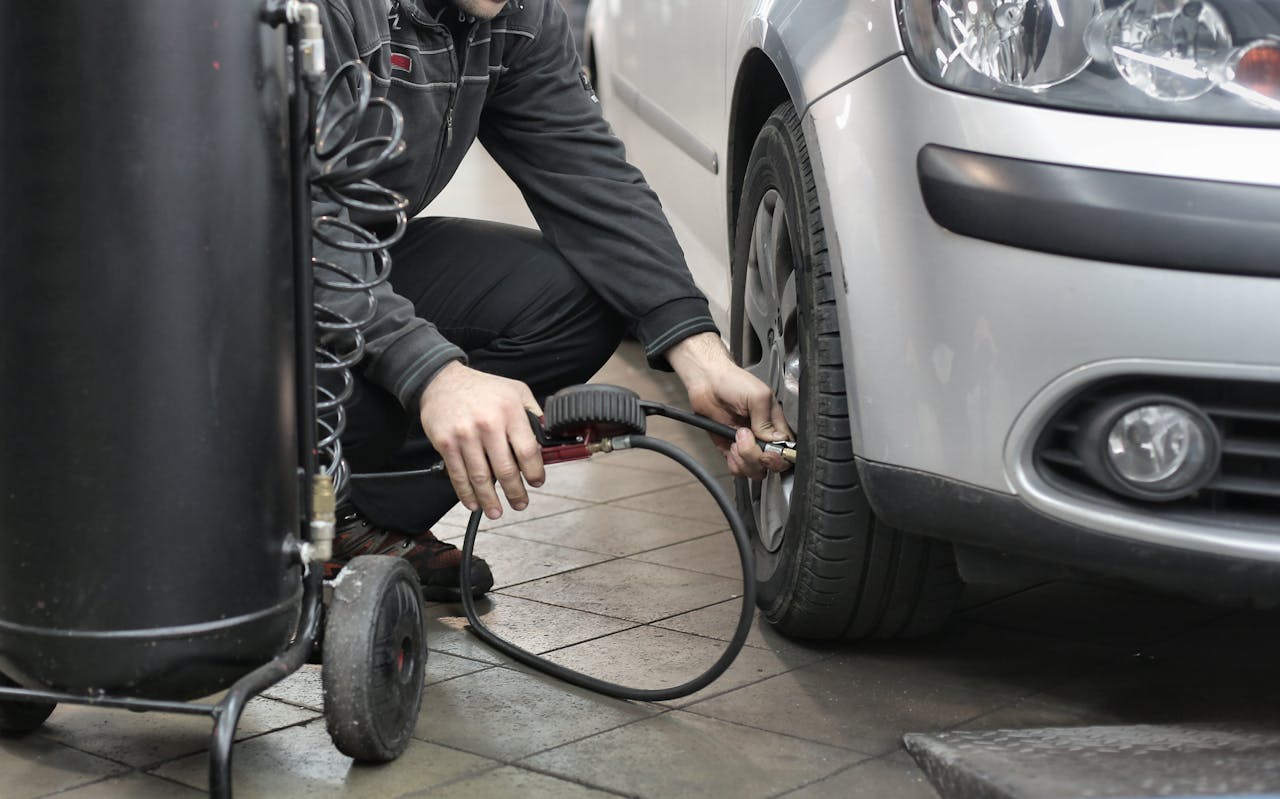
From the First Pneumatics to Modern Materials
The story of tires begins in the 19th century, when John Boyd Dunlop patented the first air-filled pneumatic tire in 1888. Until then, vehicles ran on wooden wheels wrapped with rubber, which offered no comfort. Dunlop revolutionized driving – tires became elastic, making rides much more comfortable and stable.
Later, the vulcanization process, discovered by Charles Goodyear, allowed raw rubber to be strengthened and made resistant to heat and wear. From that moment to today, technology has advanced incredibly – modern tires contain a mix of natural and synthetic rubber, steel, textiles, and special additives that allow them to adapt to various weather conditions and temperatures.
Today, almost every fleet – whether belonging to a company, public service, or transport business – must monitor the condition of its tires. Regular maintenance and timely tire replacement not only ensure safety but also extend vehicle lifespan and reduce fuel costs.
Winter, Summer, and All-Season Tires – What’s the Difference?
Although they may look similar, winter and summer tires have completely different structures and compositions.
Summer tires are made from a harder compound that grips well on warm, dry surfaces, providing stability and lower fuel consumption. However, at low temperatures, this compound hardens and loses its properties.
Winter tires, on the other hand, have a softer structure that remains elastic even below 7°C (45°F). Their deeper treads and numerous grooves allow better traction on snow, ice, and wet roads.
Then there are all-season tires, a compromise between the two types. They are suitable for drivers who don’t cover many kilometers and rarely drive in extreme conditions, but they cannot fully replace seasonal tires when weather conditions are severe.
The Dangers of Driving with Inappropriate Tires
Driving with tires not suited to road conditions can have serious consequences:
Longer braking distances – the difference between summer and winter tires below freezing can exceed 10 meters.
Slipping and loss of control – tires without proper tread cannot disperse water or snow effectively, leading to hydroplaning and skidding.
Increased fuel consumption and faster wear – underinflated or old tires put extra strain on the engine and increase fuel use.
Higher risk of tire blowouts – especially with old tires that have lost elasticity and structure.
Besides technical issues, using inappropriate tires can also lead to fines, as their use is not just a choice but a legal requirement.

Rules and Regulations in Serbia
According to current Serbian regulations, drivers must use winter tires from November 1 to April 1 if snow, ice, or frost is present on the road. The minimum tread depth for winter tires must be at least 4 millimeters, while for summer tires it must not be less than 1.6 millimeters.
Additionally, it is mandatory to carry snow chains or appropriate winter equipment in the trunk during this period if road conditions require it. Police can issue fines if drivers do not comply – which, besides financial loss, can also compromise the safety of all road users.
Tire Maintenance – Small Steps for Greater Safety
To extend tire life and maintain optimal performance, regular maintenance is necessary:
Check tire pressure at least once a month,
Regularly inspect tread depth,
Occasionally rotate tires (front and rear) for even wear,
Store tires in a cool, dry, and dark place when not in use.
It is also recommended not to use tires older than six years, even if they appear visually intact, as the material hardens and loses elasticity over time. Accessories such as tire pressure sensors can greatly contribute to safety by alerting you to damage in time.
Safety Starts with Tires
No matter how powerful, modern, or technically advanced a car is – it all fails if the tires don’t “do their job.” Tires are the first line of defense between the car and the road, and the only element that can “transfer” everything the car and driver intend to do.
Investing in quality and properly maintained tires is an investment in your own safety. Whether you drive daily in the city, plan a long trip, or manage a fleet, remember: without good tires, there is no safe journey.
Since Dunlop created the first pneumatic tire, tires have become more than just a vehicle component – they are synonymous with safety, stability, and control. Today, with technology and materials perfected, it is the driver’s responsibility to choose and maintain tires correctly. Because at the end of the day – they protect both your car and your life.




